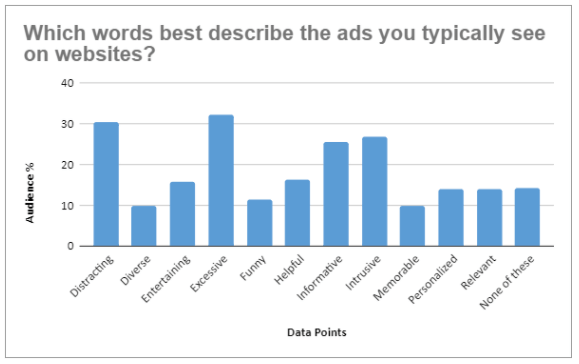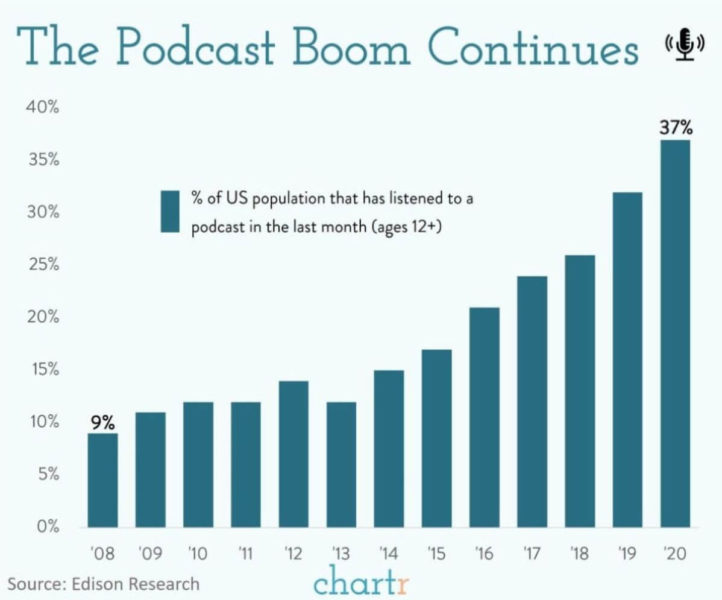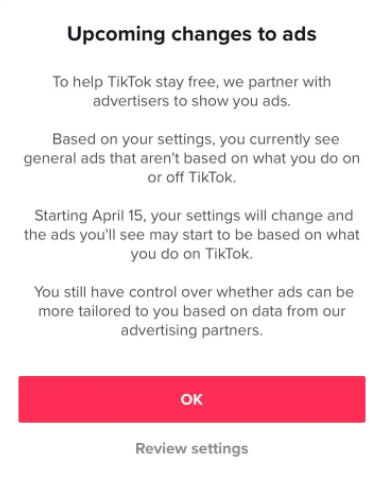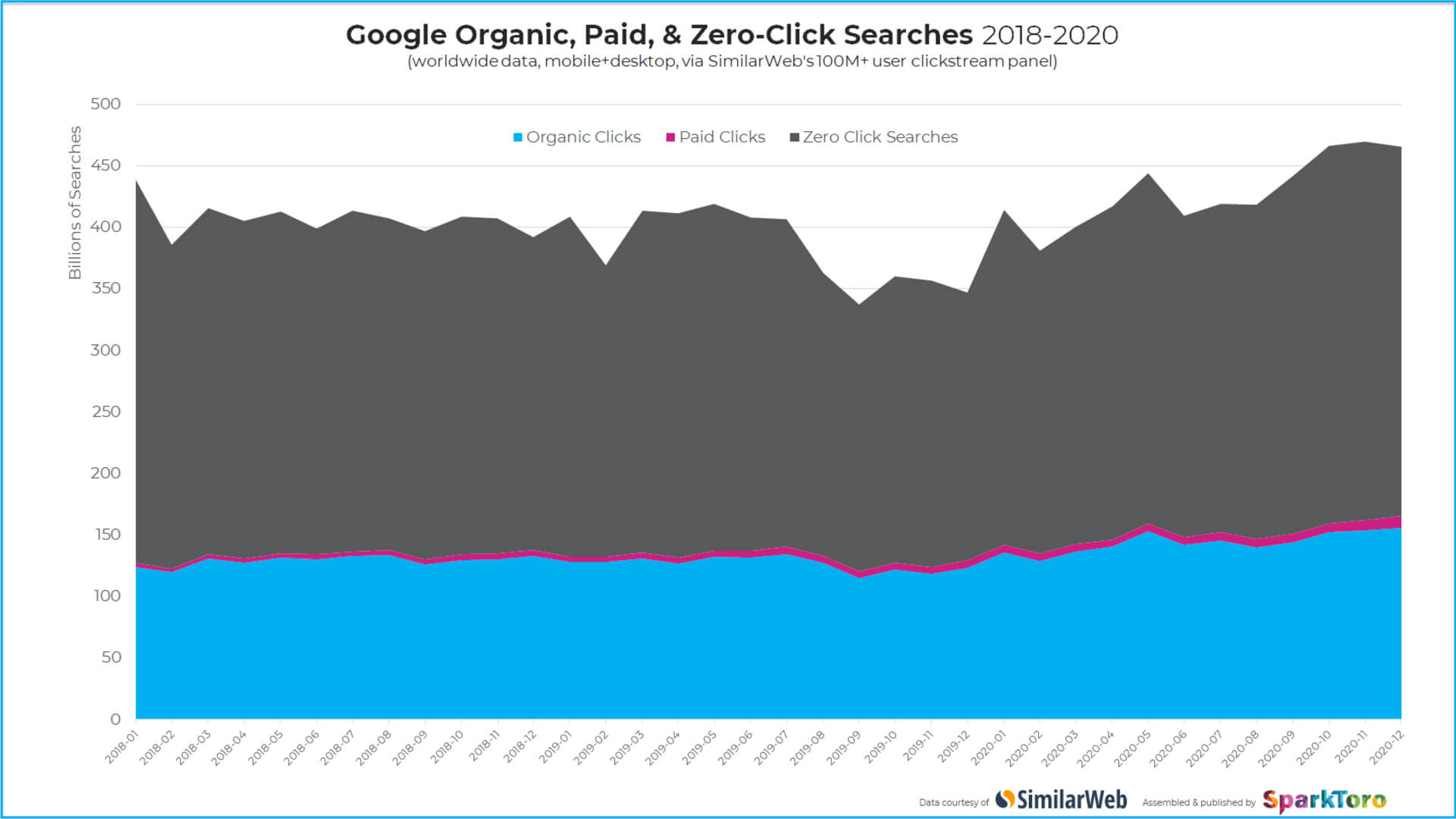Search Engine Land’s daily brief features daily insights, news, tips, and essential bits of wisdom for today’s search marketer. If you would like to read this before the rest of the internet does, sign up here to get it delivered to your inbox daily.
Good morning, Marketers, and can you provide a customized user experience without user data?
That seems to be the ongoing tug-of-war happening in the stories we’re seeing below. With work from home and school from home and fun from home and everything else from home too, we’re on our screens more than ever, which means an acute awareness of just how much advertising we see. As a result, many consumers are feeling burned out on all the ads.
At the same time, consumers tell data collectors and surveyors that, if they’re going to see ads, they want them to be relevant and targeted toward what they actually want. This is happening concurrently to the privacy measures that have been taking place over the last years and culminating soon in the elimination of third-party cookies.
It’s a real challenge for advertisers to create customized experiences for their audiences, maintain the privacy of users as they adjust targeting practices, and ensure that ads aren’t “excessive” or “distracting.”
Are you feeling the crunch? Let me know at [email protected].
Carolyn Lyden
Director of Search Content
Audiences are more annoyed by excessive ads than ads near questionable content


Brand safety was a big concern for many advertisers in 2020, but new data from WARC and GWI indicates that audiences were actually more annoyed by ad overload than seeing ads near questionable content. “Website ads were mostly seen as excessive (32%), distracting (31%) and intrusive (27%), with few (10%) reporting they stand out as memorable,” according to the survey. With many people living their lives on screens in the past year due to the pandemic, this trend was likely amplified.
Target audiences don’t mind ads when they contain useful details that cater to their interests. So what does relevance mean? “Half wanted to see ads that offer product information… Deals and discounts were desired by 40% of respondents.”
Why we care. Consumers rating ads as lacking personalization and relevance is even more critical for advertisers given the phase-out of third-party cookies and Apple’s IDFA changes. With new privacy measures taking away third-party targeting options, brands may struggle to capture that relevance that consumers crave-especially with 30% of the survey respondents saying they “deleted cookies from their device when asked what specific activities they do after seeing ads.” The crux seems to be that consumers want ads that know them without having to tell advertisers about themselves.
Is podcast advertising the most targeted (and most appreciated by the consumer)?


Along with the increase in the number of podcasts available every year, the percent of the US population that regularly listens to podcasts has also continued to go up, as the data above from chartr and Edison Research shows. This is surprising to me as I expected podcast listenership to decrease with the rise of work from home. Without a commute, I slowed down my consumption of podcasts–even shows I really liked. But that doesn’t seem to be the case overall.
Why we care. With the boom in podcasting came a corresponding rise in advertising on those platforms. In fact, advertisers spent $710 million on podcasts in 2019, and that number is forecasted to jump to $1.6 billion by 2024, according to data published by Statista. Not only is listenership up, but “the majority of these audiences spend between one and five hours per week listening to their choice of podcasts, which in turn translates to a high probability of reaching prospective customers with advertising,” says Statista. Not only does podcast advertising increase your chance of both creating and capturing demand, but podcast listeners are also very receptive to ads on their favorite shows: “The popular opinion among U.S. adults is that, as well as being entertaining, ads in podcasts are among the best targeted ones.”
TikTok users can’t opt out of ad personalization anymore


TikTok, the popular social media video platform, announced last week that users will start seeing ads based on the content they view and actions they take in the app. The notification that users got when they opened their apps indicates that “the ads you’ll see may start to be based on what you do on TikTok.”
The privacy section of the app’s Safety Center explains personalization to users in hope of making them more comfortable with the change while emphasizing why targeting is important: “One of the reasons digital platforms like TikTok are so accessible is personalization. If a business owner wants to reach people who like cats, they can run an ad on TikTok or another online platform. Likewise, you’re more likely to see ads for products you might actually want to buy. ”
Why we care. If the two stories above have shown us anything, it’s that users value both privacy and personalization when it comes to ads. They want relevant, targeted ads that provide value, but they also want to protect the information that helps advertisers create that customized ad experience. Again, likely in reaction to Apple’s IDFA changes (where the iOS will prompt users to allow or disallow tracking across apps), the change means TikTok can still provide social media advertisers with some targeting.
Retail and education stand to take the biggest Core Web Vitals hit


Less than 5% of education URLs and almost NONE of the top-ranking retail URLs will get a rankings boost from Core Web Vitals as their sites stand today, according to new data from BrightEdge. Only 24% of top finance sites and 13% of B2B URLs would see their rankings improve after the CWV launch.
Why we care. If your brand or your client’s company exists in these sectors, it may be worth taking a closer look at the three main elements of Core Web Vitals: Largest Contentful Paint, First Input Delay, and Cumulative Layout Shift. If you’re ready to get started ASAP, check out our guide to auditing your sites for CWV problems.
Google provides clarification around SharedArrayBuffer notice
Last week Google sent out a notice to some site owners, webmasters, SEOs and publishers around something called a SharedArrayBuffer. It caused a ton of confusion and Google promised to clarify why it was sent and what you need to do if it was sent to you. Well, Google sent out that clarification late on Friday afternoon.
The blog post from Google explains why they sent the notifications and what you may want to do to address the issue. Most importantly, this is not specifically an SEO concern. These messages do not impact your Google rankings. The notice was about how Chrome and other modern browsers will deal with SharedArrayBuffers and what you can do to manage that when Chrome 91 is released.
Project management, influencer advertising, and prepping your SMX pitch
How to deal with difficult people on projects. This resource is directed toward developers, but I think it’s universally helpful for SEOs, search advertisers, and marketers in general. Learn how to handle personality types that may impede your progress like The People Pleaser, The Extreme Underestimator, and The Dictator to get projects across the finish line.
Digital content creators are stuck between pleasing fans and monetizing their lives. This past Sunday (a week from yesterday), Twitch streamer Ludwig Ahgren turned on his camera and kept it on for DAYS. This “subathon” is when a streamer broadcasts for an extended period to gain subscribers. Many streamers have paid advertising sponsors, too–like popular gamer Ninja who’s sponsored by big brands Red Bull and Adidas. It’s part of a trend of online content creators monetizing every aspect of their lives.
Want some practice before you pitch for SMX? Microsoft launched Presenter Coach for PowerPoint. The application is available on the web, Windows, Mac, iOS, and Android and helps you prepare for virtual presentations by helping you pace your speaking, eliminate filler words, and break the habit of reading directly from slides. It’s already SMX-ready, too, giving you a warning if you swear in the presentation.
How the New York Times A/B tests their headlines
The NYT doesn’t hide the fact that they vary their headlines across print and digital. Online versions of stories are published when they break, but print has to wait until the next day’s paper goes out. There are no space limitations on a website, while print definitely comes with set parameters for headline length. Plus, as stories evolve and new details come to light, digital headlines can be adjusted to reflect new information.
“The Times also makes a practice of running what are called A/B tests on the digital headlines that appear on its homepage: Half of readers will see one headline, and the other half will see an alternative headline, for about half an hour. At the end of the test, The Times will use the headline that attracted more readers,” says Alexandria Symonds, senior staff editor at The Times.
That last part intrigued Tom Cleveland, so he created a tracker to compile the data around NYT’s A/B tests. He found that almost one-third of article headlines on the New York Times’ site have been A/B tested–one article even got eight different titles!
Many of the changers were minor like capitalization changes. Others reflected the changing information as stories evolved. However, most important to marketers, most headline tests were to determine which titles got the most clicks from readers. What’s most interesting is that the “spicier” the headlines got, the more clicks and reads they tended to get, as well.
“I crunched the numbers, and it turns out that A/B-tested NYT articles are 80% more likely to rank on a ‘most popular’ list. And—not surprisingly—more headline testing correlates with more engagement,” says Cleveland.
So if you aren’t A/B testing your ad copy headlines or SEO title tags, maybe it’s time to give it a try?
Contributing authors are invited to create content for Search Engine Land and are chosen for their expertise and contribution to the search community. Our contributors work under the oversight of the editorial staff and contributions are checked for quality and relevance to our readers. The opinions they express are their own.



